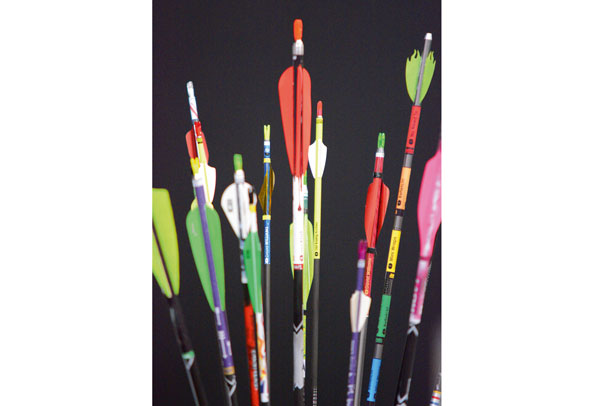Patrick Huston helps shine some light on what sort of spine to go for when shooting fat arrows…

When people go for fat arrows some people go for the correct spine for them
Q: Moving indoors I’m planning to shoot fat arrows, and I want big vanes on them. Should I go for feathers, plastic vanes or something like XS Wings?
A: Hi! So, it all depends on what sort of arrow you are going to shoot. When people go for fat arrows some people go for the correct spine for them. If this is for aluminium shafts with a low-poundage bow the arrow itself is still quite small. However, if the archer has a high poundage then a 23 is a big shaft, but if it is matched to the bow without a lot hanging out the front then the dynamics should be OK. It’s all about how much correction to the flight the arrow needs and the weight compared to the poundage.
If your arrow is properly matched to your bow then I would recommend a 100mm XS Wing. They are stiff enough to move heavy arrows and big enough to steer them effectively and straight for the short distance. However, a lot of people shoot arrows much bigger than is technically correct by shooting with over-hang. If you are miles off spine I would recommend feathers, because they slow the back end so much the arrow straightens very quickly. I have shot very impressive scores with arrows five spines off with five-inch feathers on them.
Personally, I’m not a big fan of plastic vanes as a recurve archer, though I know a lot of compounders use them. They are particularly good if you have a quick bow with large arrows, as they really grip the air and start the arrow spinning quickly. For this you do need to fletch at quite a steep angle. In my opinion the only way to shoot plastic vanes is with a strong angle, maybe even helical, but I know many people find doing helical fletchings a struggle. On the other hand, plastic vanes may be a lot more durable if you are shooting single-spot tournaments as feathers ruffle and damage, particularly if shot from a compound, and Mylar vanes can be damaged by consistent tight grouping too.
This article originally appeared in the issue 111 of Bow International magazine. For more great content like this, subscribe today at our secure online store: www.myfavouritemagazines.co.uk

